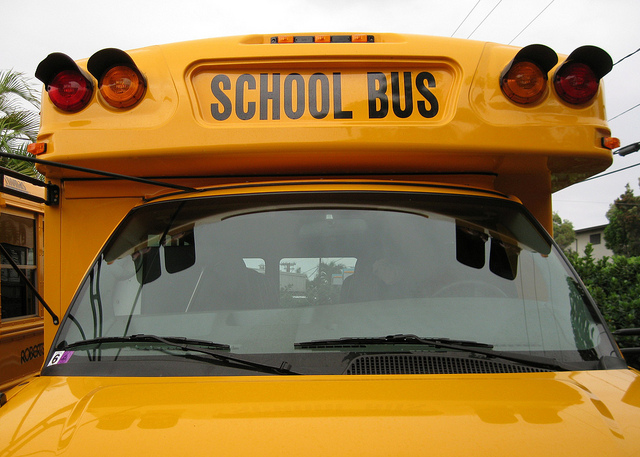
Kids are exposed to air pollution on school buses, but an on-board filtration system can cut pollutants by 88 percent, according to a new study.
A high-efficiency cabin air, or HECA, system developed for school buses could help protect the 25 million American children who ride on school buses nearly every day, according to the researchers from the UCLA Fielding School of Public Health.
The study, published online Monday in the peer-reviewed journal Environmental Science and Technology, tested six school buses in Los Angeles.
The research is important because children are more susceptible to air pollution than adults. They breathe more quickly and their immune and cardiovascular systems are still developing, according to Yifang Zhu, the study’s senior author and an associate professor in the department of environmental health sciences.
“During school bus commuting, children can be exposed to significantly greater levels of air pollutants than a typical resident in the South Coast air basin,” Zhu said in a release. “Studies have shown that exposure to high levels of vehicle pollution is associated with pulmonary and cardiovascular health risks, including oxidative stress, mitochondrial damage and acute pulmonary inflammation.”
Studies have found that children exposed to pollutants from vehicles tend to perform less well in school.
Surprisingly, the study found that the pollution reduction was even greater under freeway driving conditions, despite the fact that freeways have particularly high pollutant concentrations due to traffic congestion and increased emissions.
The air inside buses with the HECA system was as clean as air near the beach in Santa Monica.
The research, conducted without children on board, tested the buses while they were still, and while they were driving on freeways and major arterial roadways in Los Angeles. Scientists tested the air inside and outside of the buses for vehicle-emitted particulate matter, including black carbon and fine and ultrafine particles, down to a few nanometers in size.
The study was funded by the California Air Resources Board, which also paid for a study more than a decade ago that was the first to find serious air quality problems inside diesel-powered school buses. That study led to efforts to retrofit school buses with exterior pollution-reducing devices, but that doesn’t always result in cleaner air inside the buses.
Most school buses don’t have interior mechanical filtration systems, according to Eon Lee, the study’s first author and a postdoctoral researcher in Zhu’s lab.
“School buses are by far the safest way to transport children between school and home,” Zhu said. “Our goal is to make it also the cleanest way.”
A follow-up study will evaluate how much exposure can be reduced by operating the HECA filtration system in a large number of school buses with children aboard, Zhu said.





